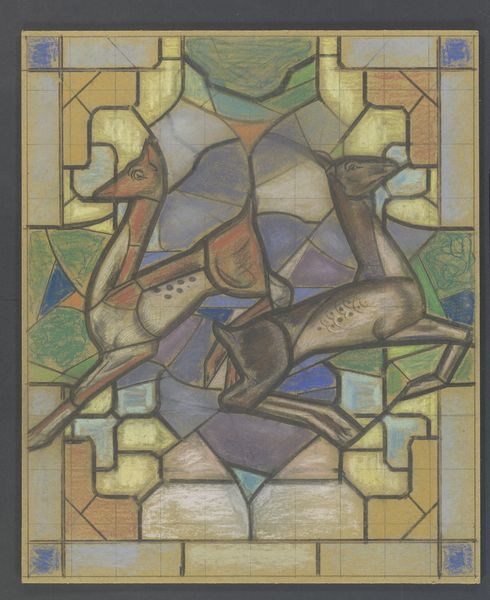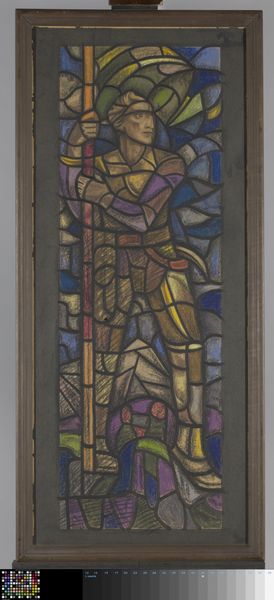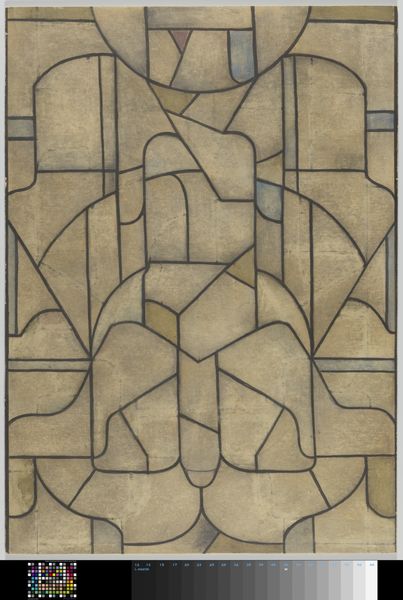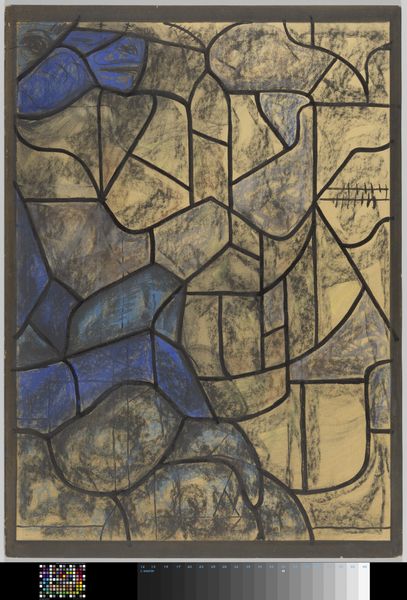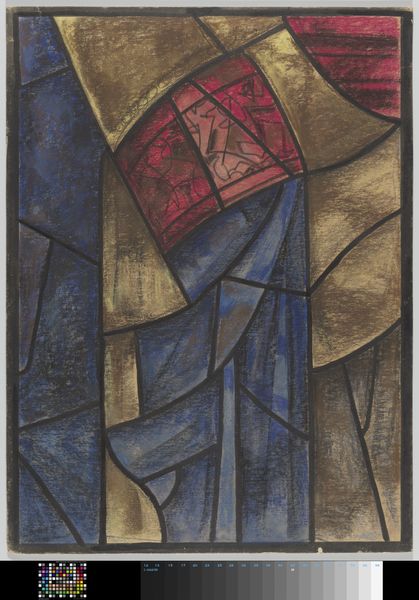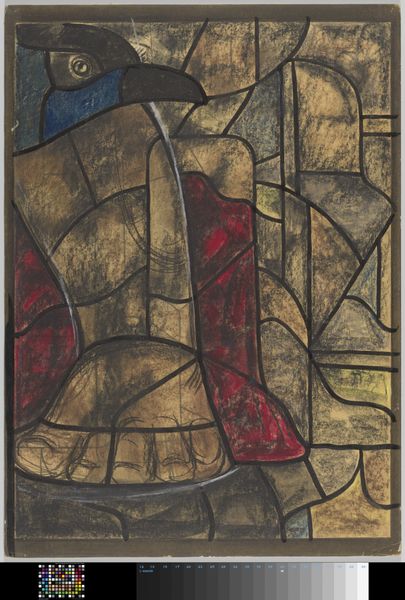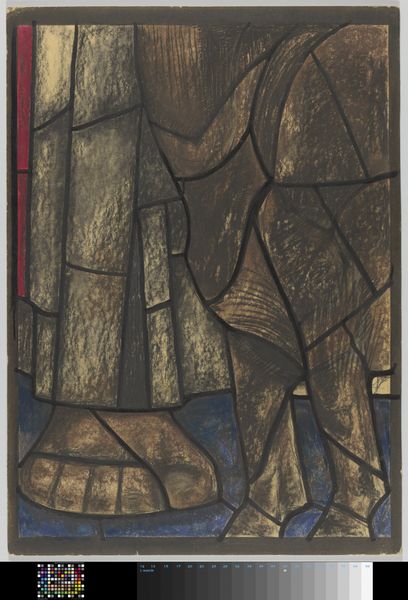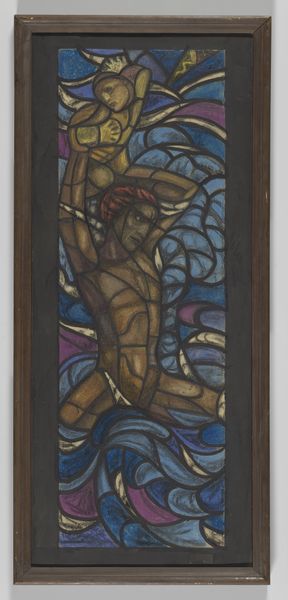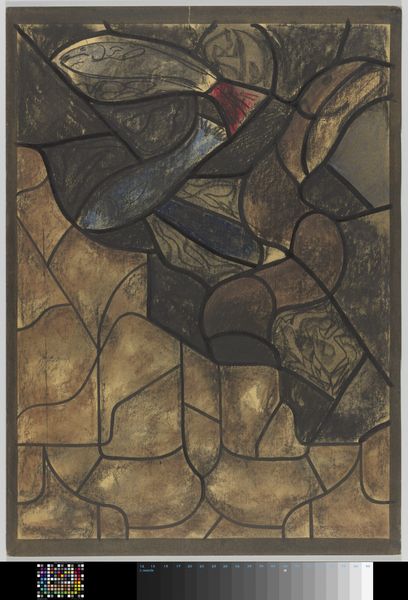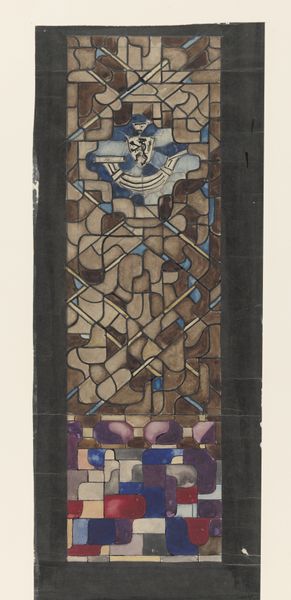
#
natural stone pattern
#
naturalistic pattern
#
abstract painting
#
bird
#
geometric pattern
#
tile art
#
abstract pattern
#
wooden texture
#
wall painting
#
layered pattern
#
stained glass
Dimensions: height 635 mm, width 530 mm
Copyright: Rijks Museum: Open Domain
Curator: What a fascinating design! Jaap Weyand created this piece, titled "Design for a Stained Glass Window with a Bird and Fish," sometime between 1896 and 1934. Editor: It's beautiful. There is an immediate tension with the grid interacting with the naturalism of the figures and texture. Is this solely a pastel drawing? Curator: As the title indicates, this drawing acted as a scaled plan, rendered meticulously to guide the fabrication of a leaded stained glass window. The pastels convey not just colour, but how light may alter the mood of an interior. Weyand here seems quite optimistic, wouldn't you agree? Editor: Absolutely, but consider what stained glass production represents: industrialization meeting artistry. Artisans transforming raw materials like silica and metallic oxides, smelting these elements at incredible temperatures in highly toxic working conditions, breathing the particulates over their work lives. This all stands in contrast to this natural idyll the artwork portrays. Curator: I'm glad you brought that up because if we look closely, there's a tension between the industrial processes you mentioned, but also how craft became increasingly aligned with notions of nationhood and ethnic identity in the early twentieth century. The design takes its formal cues, I would argue, from nature. Consider how that dovetails with, for instance, the Dutch Arts and Crafts movement. Editor: Yes, there's definitely that yearning for a pre-industrial harmony on display. But thinking about glass making today, it's largely automated, using computer numerical control to create precise shapes and designs, including those like these which simulate the irregularity and colour shifts of hand-blown glass. It raises an interesting question: does mechanization necessarily destroy artistic integrity? Curator: Or perhaps transform our ideas about the artist. As a design object, its purpose always depended upon a collective effort. The window could only come into being if tradespeople had a hand in production, from the glazier cutting glass according to a pattern to the master craftsmen melting together the individual colours in molten glass. Editor: Precisely. When we examine Weyand’s window, then, we aren't simply observing a composition of a fish and bird. Instead, we gain insight into shifting production values, cultural anxieties around labour, as well as the complex relationship between design, material, and craft. Curator: Yes, I’ll take with me a fuller sense of how we invest so much cultural weight into artisanal work at certain moments. It helps me situate these artworks and view them with fresh eyes.
Comments
No comments
Be the first to comment and join the conversation on the ultimate creative platform.
